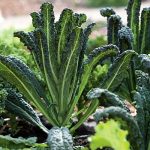Lettuce – Red Salad Bowl
€1.95
Description
Lettuce – Red Salad Bowl is a traditional oak-leaf lettuce with attractive burgundy/green leaves. It’s very high yielding and will produce succulent leaves over a long period of time.
Sowing:
March until July in modules, plant out about 4 to 5 weeks later.
Spacing:
Between rows: 35cm
Between plants in the row: 35cm
Approx seed count: 200
Growing lettuce:
Lettuce – Red Salad Bowl
Latin name:
Lactuca sativa
Family:
Compositae
With the help of a greenhouse or polytunnel you can harvest Lettuce – Red Salad Bowl for over ten months of the year. It is a wonderful and flexible crop especially suited for early spring and autumn cropping.
Loose leaf:
These lettuces do not form hearts thus making them suitable for picking individual leaves as required. They mature quickly and are very easy to grow. There are hundreds of varieties, which include Lollo Rossa and Bionda, Red and Green Salad Bowl.
Soil and site:
The soil should be reasonably fertile. A pH of 6.5-7.5 is ideal. Only well-decomposed compost should be used.
Sowing:
I generally sow lettuce seeds in modular trays. If I want a head of lettuce, only one seed per cell is required. For cut and come again lettuce I generally sow 3-5 seeds per cell. Lettuce needs light to germinate, so do not cover the seeds with compost. In your polytunnel or greenhouse you can start sowing lettuce in late January and continue on with successional sowings until August. During late spring and summer lettuce will grow better outdoors.
There are also varieties available that can overwinter indoors and are ready in early spring. Because of the disease problem of overwintering lettuce, I prefer to grow the more hardier orientals during the winter months.
During hot spells move the trays into a cool shed for 2 days and then back into the tunnel. At 18ºC lettuce will germinate after 3-4 days.
Remember that lettuce seeds won’t germinate if the temperature of the compost is above 25˚C. The seeds develop a dormancy and germination occurs only weeks later and then very patchy.
Timing:
From sowing to planting out: 3-5 weeks depending on the season and the weather.
From planting to harvesting: 4-6 weeks.
Planting:
The seedlings should be planted with their seed leaves (cotyledons) just above ground level. If your seedlings do get a bit leggy you can safely plant them a little bit deeper in order to cover the stem but only up to the seed leaves. The plants definitely seem to appreciate this extra care.
But never plant the seedlings below the cotyledons. If the growing point of the plant is buried it will rot away.
Rotation:
Lettuce – Red Salad Bowl is an ideal plant for filling in gaps. It can be planted between widely spaced crops such as courgettes and can be harvested before the courgette needs that space. If you have any spare space anywhere in your tunnel or greenhouse you can happily plant lettuce there. On the other hand you should avoid planting lettuce in the same place every year to prevent a build up of pests and diseases, especially the lettuce root aphid.
Plant care:
It is important to keep your lettuces weed free at all times and avoid spilling earth onto the leaves while weeding. During dry spells you may have to water the plants.
Harvesting and storing:
There are three ways of harvesting lettuce:
- Cut the whole plant when fully mature.
- Pick individual leaves from the outside of the plant as required (only for leafy lettuce).
- Cut a loose-leafed lettuce about 5cm above the growth point and it will grow new leaves that can be cut again within the next 3 weeks. The plant should be cut before it has fully matured.
Tip:
Harvest lettuce at sunrise!
The earlier in the day you harvest your lettuce the longer it keeps and the more nutritious it is. If you harvest lettuce at 6am and put it in a plastic bag in the fridge it will keep for a week as fresh as when harvested. If you harvest lettuce on a sunny day at 2pm it has already wilted as water has evaporated from the leaves and the sunnier the day the more water evaporates.
Potential problems:
Lettuce – Red Salad Bowl
Pests:
Leatherjackets
Leatherjackets are the larvae of the cranefly (daddy longlegs). These are the louts of your vegetable patch as they just eat through the stem of newly planted lettuce moving along the row leaving a trail of destruction. It is important to check your newly planted seedlings regularly and inspect the soil under each destroyed lettuce picking up the larvae before it moves onto the next plant. You can then replant the empty space with a spare lettuce.
Cutworms
Cutworms are the larvae of some moth species. They do similar damage as the leatherjackets but are less common.
Slugs and snails
You can spread organic slug pellets Ferramol around newly planted crops.
Leaf aphids
Every year you will get a spell when aphids suck out the juice of your lettuce. Most of the time, the damage is not severe and you can simply rinse them off. Leaf aphids can be prevented by a weekly spray of garlic water. It only works if you spray before aphids appear. There are also aphid resistant varieties available.
Root aphids
Root aphids are likely to be more of a problem in the tunnel or greenhouse because generally less attention is paid to crop rotation.
You notice them when you pull up a sick looking lettuce plant and you find white powdery dust with small white aphids all around the roots. Once you have it, there is no cure for this lettuce. To prevent further outbreaks, try the following combination of methods:
- Rotate your lettuce
- Use a tolerant variety
- Remove lettuce plants and roots when ready. Do not leave bolted or old lettuce in the ground.
Diseases:
The two most common diseases in lettuce are downy mildew (Bremia) and grey mould (Botrytis).
There are now many mildew resistant varieties available and grey mould can be avoided if they are grown in a clean weed free environment and adequate ventilation is provided. As a prevention avoid watering late in the evening as this encourages fungal diseases.
Disorders:
Tip burn
Tip burn is a physiological disorder associated with a lack of calcium, especially if the soil is too dry. The plants literally lose more water than they can absorb, causing a browning of the leaf edges. The plants will eventually rot. Generally lettuce plants suffer more in a greenhouse or polytunnel. There is no cure for it, but luckily there are now many varieties that are less susceptible to tipburn. As a prevention mist the atmosphere in the greenhouse or polytunnel in late morning on hot days. You can do this by simply spraying the water around the air.
Leggy seedlings
Lettuce seedlings are prone to become leggy. The reason is generally lack of light. So make sure that your propagation area is in full sun. Leggy seedlings are weaker and the plants are thus more prone to pests and diseases.
How much to grow?
Most people sow too many seeds in one go and have a massive glut at some point with nothing afterwards. From one sowing they will all ripen around the same time and will only last for a week or two before they bolt .
A little bit of planning will provide you with lettuce for many months. For example if you eat 5 heads of lettuce per week sow 15 seeds every fortnight. The 5 extras are spares for potential slug or leather-jacket casualties.
For more information have a look at my monthly newsletters on:
https://greenvegetableseeds.com/newsletters/
A good information for all gardening news is the Irish Garden Magazine:




